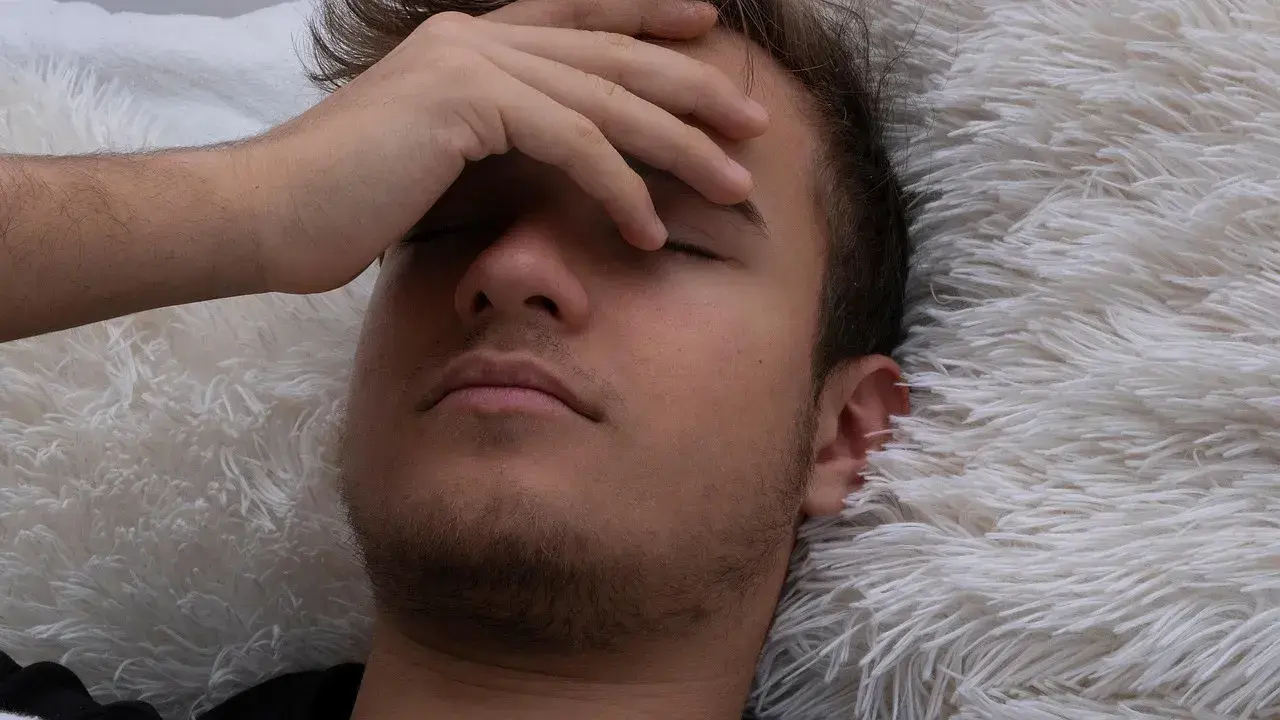Have you ever felt a dull ache in your lower belly that keeps coming back, no matter what you do? Or a stabbing pain that shows up every month and refuses to go away with a hot water bag or painkillers? For many women, this is not just "period pain."
This could be something deeper, more serious. The truth is, many women live with it for years without knowing what it is. We are talking about endometriosis. It hides behind normal symptoms and slowly disrupts your body and life. This article will help you understand exactly what endometriosis feels like, how to tell the difference between typical menstrual discomfort and something more serious, and what you can do about it. So, let’s get started!
What Does Endometriosis Feel Like? A Deeper Look
Endometriosis pain varies from woman to woman. But one thing is common: pain.
Over 60% of women with endometriosis report chronic pelvic pain (CPP). They are also 13 times more likely to experience severe abdominal pain compared to women without it.
This pain is not normal. It messes with your daily work, sleep, mood, and even relationships. It may feel sharp, dull, pulling, or heavy. This is not something you can ignore.
It is not just about the cramps. It's pain layered with fatigue, bloating, and emotional stress.
- It feels like your uterus is being twisted. Many women say it feels like glass shards moving inside their belly.
- Others describe it as a burning pain that shoots down the legs. It can be sharp during periods or dull and nagging throughout the month.
- The pain might increase while passing urine or stools. Some feel it while sitting or walking. And during sex? It can be unbearable. Sometimes, the pain comes without warning and doesn’t follow the menstrual cycle at all.
- Many women also report headaches, dizziness, nausea, and weakness. And let’s not forget fatigue. Not tired. Fatigue. The kind that makes it hard to even get out of bed. This mix of physical pain and emotional toll creates a heavy burden.
Many women also experience:
- Pain in the lower back and legs
- Cramps before, during, and after periods
- Painful bowel movements
- Pain during ovulation
- Nausea and bloating
5 Symptoms of Endometriosis You Should Never Ignore
Don’t ignore if you have:
1. Pelvic Pain That Doesn’t Go Away
This is the most common and stubborn sign. It doesn’t just show up during periods but stays around even after. You might feel it as a dull ache or as a sharp, stabbing pain that seems to have no pattern. Sometimes, it’s one-sided. Sometimes it spreads down the legs or up the back.
2. Painful Intercourse
This is more than just discomfort. Some women feel a deep pain inside the belly during or after intercourse. It’s not emotional. It’s physical and very real. It can impact relationships and mental health.
3. Pain While Passing Urine or Stool
It may burn. It may feel like pressure. It may hurt only during periods. Or every time. This pain can make simple things like using the toilet a daily struggle.
4. Irregular or Heavy Periods
Noticing blood clots, frequent spotting, or flow that lasts for more than a week? That could be linked to endometriosis. Periods may be irregular, too short, or too long.
5. Chronic Fatigue and Bloating
It’s the kind of tired that sleep doesn’t fix. Along with that comes bloating, nausea, and even digestive issues. Many women report a belly that looks swollen even when they haven’t eaten much.
Even one of these needs a doctor’s look.
How to Tell the Difference: Endometriosis vs. Normal Period Pain
| Feature | Normal Period Pain | Endometriosis Pain |
|---|---|---|
| Duration | 1–2 days | Lasts longer, even all month |
| Pain Relief | Goes away with rest or medicine | Often doesn't respond to medication |
| Location | Lower belly | Belly, back, legs, rectum, bladder |
| Impact on Life | Slight discomfort | Major daily disturbance |
| Associated Symptoms | Mild cramps, mood swings | Nausea, fatigue, painful sex, bloating |
| Pain During Sex | Rare | Very common |
| Pain During Urine/Bowel Movements | Unusual | Very common |
What Causes Pain in Endometriosis?
This condition happens when tissue like the lining of the uterus grows outside the uterus. This tissue reacts to hormones. It bleeds, swells, and causes inflammation. But unlike normal periods, this blood has nowhere to go. It gets trapped. That causes cysts, scars, and severe pain.
The pain comes from:
- Inflammation around the lesions
- Formation of scar tissue (adhesions)
- Cysts pressing on nerves
- Hormonal changes cause swelling
Over time, this can even affect fertility, if left untreated. The fallopian tubes can get blocked. The ovaries may develop cysts. This makes periods irregular and painful.
How Does Endometriosis Affect Daily Life?
It breaks routine. It affects everything, eating, sleeping, working, and relationships. Women with endometriosis often miss work or school. They avoid social events. They can't plan things in advance. Constant pain can lead to anxiety and a low mood. It’s exhausting.
Imagine living with:
- Fatigue even after 8 hours of sleep
- Sharp pain while standing or sitting
- Pain during travel or exercise
- Unable to lift even light weights
- Feeling bloated and tight all the time
It messes with your identity. You feel like a prisoner in your own body.
Different Types of Pain in Endometriosis
There are many faces of Endometriosis pain. It’s not just one kind. It may show up as:
- Cyclic pain – Related to periods.
- Non-cyclic pain – Happens anytime.
- Ovulation pain – Occurs mid-cycle.
- Pelvic floor pain – Due to tight pelvic muscles.
- Neuropathic pain – Pain from nerve damage.
Each woman experiences a mix. Some feel only during periods. Others feel it all month.
The Emotional Impact of Chronic Endometriosis
Endometriosis affects your mental and emotional health just as much as your physical health. Chronic pain pulls you down. It creates fear, stress, and helplessness. You start doubting your own body. This long-term pain and uncertainty often lead to:
- Anxiety & Depression
- Sleep disturbances
- Low self-esteem
- Loss of interest in intimacy and strained relationships
- Emotional burnout
Support groups and therapy help. Yoga, mindfulness, and talking to other women also make a difference.
Living With Endometriosis: Coping Tips That Help
There’s no cure yet, but you can manage symptoms effectively with the right strategies:
- Track your symptoms. Use apps or notebooks.
- Change your diet. Reduce sugar, dairy, and processed foods.
- Move your body. Yoga, walking, and light exercises.
- Heat therapy. Use hot water bags often.
- Try TENS machines. They block pain signals.
- Sleep well. Try a strict sleep routine.
- Talk to someone. Mental health support matters.
Medical Treatments for Endometriosis
Your treatment depends on symptom severity and fertility goals. Options include:
- Hormonal therapy: To slow growth.
- Painkillers: Not always enough.
- Laparoscopy: For diagnosis and removal.
- Birth control pills: For managing hormones.
- GnRH agonists: Stops periods.
- Hysterectomy: As a last resort.
Talk to a gynecologist to weigh risks and benefits.
How Early Can Endometriosis Start?
Girls as young as 13 have shown signs. It is not an adult-only condition. If a girl complains of severe cramps, don’t ignore it. Watch for mood changes, missed school days, and lack of focus. Early care helps avoid complications later.
Does Endometriosis Affect Pregnancy?
Yes. It affects fertility. Blocked tubes, poor egg quality, and hormonal imbalance can reduce chances. But many women still get pregnant. With help like IVF and surgery, pregnancy is possible. Speak with a fertility expert early.
Is There Any Diet for Endometriosis?
Yes. An anti-inflammatory, hormone-balancing diet may reduce symptoms:
Eat more:
- Leafy greens
- Turmeric
- Omega-3s (flaxseeds, fish)
- Berries and nuts
Avoid:
- Caffeine
- Sugar
- Red meat
- Processed foods
A healthier gut = reduced inflammation = reduced pain.
What Exercises Are Safe for Endometriosis?
Skip intense workouts that strain your core. Instead, try:
- Gentle yoga
- Pilates
- Light stretching
- Walking
Keep it light but regular. Move your body every day. It eases stress, pain, and helps with sleep.
Final Words: Know the Pain. Own Your Voice.
So, what does endometriosis feel like? It feels like a pain that doesn’t stop. It’s more than just period pain. It eats into life slowly. But the earlier you catch it, the better it can be handled. Know your body, track your pain, speak up, get help. Don’t wait. You don’t have to suffer in silence. Your pain is real. Your story matters.
FAQs
1. Can I have endometriosis without painful periods?
Yes. Not all women have painful periods. Some only feel pain during sex or while passing urine.
2. How is endometriosis confirmed?
Only laparoscopy confirms it. Scans often miss it.
3. Can endometriosis go away after menopause?
Sometimes yes. Hormone drop can reduce symptoms. But pain may continue if scars remain.
4. Is endometriosis genetic?
Yes. If your mother or sister has it, your chances are higher.
5. Can birth control cure endometriosis?
No. It only controls symptoms. The disease stays. You need long-term monitoring.
लेखक

